
News Directory
The Ultimate Guide to Forklift Bearings: Types, Maintenance, and Replacement
I. Introduction to Forklift Bearings
1. What are Forklift Bearings?
Bearings are fundamental mechanical components that facilitate motion by reducing friction between moving parts. In a forklift, these critical components allow for smooth and efficient operation of various systems, from the wheels that move the vehicle to the mast that lifts heavy loads. Essentially, a bearing supports a load while enabling relative motion between two parts, ensuring that the forklift can perform its functions safely and effectively. They are typically made from hardened steel or other durable alloys and are designed to withstand significant radial and axial forces.
2. Importance of Bearings in Forklift Operation
Forklifts operate in demanding environments, often carrying heavy loads and performing repetitive lifting and moving tasks. This constant stress makes the integrity of their bearings paramount. Properly functioning bearings are crucial for:
- Safety: Worn or damaged bearings can lead to unstable loads, erratic steering, or even component failure, posing serious safety risks to operators and surrounding personnel.
- Efficiency: Smooth-running bearings minimize friction, which in turn reduces energy consumption and allows the forklift to operate more efficiently, extending battery life in electric models and fuel economy in internal combustion models.
- Performance: Bearings directly impact the precision and responsiveness of the forklift's movements, including steering, lifting, and driving. Optimal bearing performance ensures the forklift can maneuver and handle loads with accuracy.
- Longevity of Components: By reducing wear and tear on adjacent parts, healthy bearings extend the lifespan of other critical forklift components, such as axles, wheels, and mast channels, thereby reducing overall maintenance costs and downtime.
3. Brief Overview of Different Types of Bearings Used in Forklifts
Forklifts utilize a variety of bearing types, each designed for specific functions and to handle different types of loads and forces. Here's a brief overview:
| Bearing Type | Primary Function | Common Location in Forklifts | Key Characteristics |
|---|---|---|---|
| Ball Bearings | Support radial and some axial loads; high-speed use | Steering columns, smaller linkages | Low friction, good for high speeds, less load capacity |
| Roller Bearings | Support heavy radial and/or axial loads | Wheels, mast, transmissions | High load capacity, various configurations (tapered, cylindrical) |
| Thrust Bearings | Support purely axial (thrust) loads | Mast pivot points, steering systems | Designed for axial force, prevents binding under vertical loads |
| Plain Bearings | Simple sliding contact; used for oscillating motion | Smaller pivot points, sometimes mast | Low cost, can handle high loads at low speeds, requires lubrication |

II. Types of Forklift Bearings
Forklifts rely on a specialized array of bearings, each designed to handle the unique stresses and demands of its location. Understanding these different types is key to proper maintenance and replacement.
1. Wheel Bearings
Function and Location: Wheel bearings are absolutely essential for a forklift's mobility. Located within the wheel hubs on both the drive and steer axles, they allow the wheels to rotate smoothly with minimal friction. They support the entire weight of the forklift and its load, absorbing significant radial and axial forces as the vehicle moves, turns, and brakes.
Common Issues and Symptoms of Failure: Due to the heavy loads and constant rotation, wheel bearings are prone to wear. Common issues include:
- Grinding or humming noises: Often increases with speed or when turning. This is a tell-tale sign of metal-on-metal contact due to lack of lubrication or wear.
- Excessive play or looseness in the wheel: If you can rock the wheel significantly when the forklift is jacked up, the bearings are likely worn.
- Vibration: Felt through the steering wheel or the entire chassis, especially at higher speeds.
- Pulling to one side: A failing wheel bearing can cause the forklift to drift, similar to an alignment issue.
- Heat: The hub area might feel excessively hot to the touch due to increased friction.
- Uneven tire wear: While many factors cause this, a failing wheel bearing can contribute to irregular tire wear patterns.
2. Mast Bearings
Function and Location: Mast bearings are perhaps the most critical for a forklift's primary function: lifting and lowering loads. These bearings are located within the mast channels, guiding the inner mast sections and the carriage up and down. They bear the enormous weight of the load, ensuring smooth, controlled vertical movement without binding or excessive friction. They also handle significant thrust (axial) loads when lifting, as well as radial loads from the mast components themselves.
Types of Mast Bearings: The specific types of mast bearings used depend on the forklift's design and lifting capacity.
- Thrust Bearings: These are specifically designed to handle axial loads, meaning forces applied along the axis of rotation. In a forklift mast, they prevent the mast components from binding under the vertical weight of the load. They are often found at pivot points or where a large vertical force needs to be smoothly transferred.
- Roller Bearings (e.g., Guide Rollers): Many mast systems utilize various types of roller bearings, often referred to as guide rollers or mast rollers. These are typically cylindrical or tapered roller bearings designed to manage both radial and some axial loads. They ensure that the inner mast sections slide smoothly within the outer sections, preventing side-to-side play and maintaining stability during lifting operations. Their robust design allows them to withstand the high forces associated with lifting heavy objects.
| Mast Bearing Type | Primary Function | Characteristics | Common Issues & Symptoms |
|---|---|---|---|
| Guide Rollers | Facilitate smooth vertical movement of mast sections | Often sealed, robust roller design, handle radial loads | Sticking, jerky mast movement, visible wear on rollers/channels |
| Thrust Bearings | Absorb and facilitate rotation under axial load | Designed for vertical forces, typically a washer-like design | Squealing, binding, difficulty raising/lowering, excessive play |
3. Steering Bearings
Function and Importance: Steering bearings are crucial for the forklift's maneuverability and control. They are found in various parts of the steering system, including:
- Steering Axle Pivot Points: Allowing the steer axle to pivot and absorb shocks.
- Steering Knuckles: Enabling the wheels to turn left and right.
- Steering Column: Ensuring smooth rotation of the steering wheel.
These bearings allow for precise and effortless steering, which is vital for navigating tight spaces and accurately positioning loads. Worn steering bearings can lead to loose, unresponsive, or stiff steering, significantly compromising safety and productivity.
4. Other Bearings in Forklift Systems
Beyond the main categories, forklifts incorporate various other bearings in different subsystems to ensure overall smooth operation:
- Transmission Bearings: Found within the transmission system, these bearings support shafts and gears, allowing for efficient power transfer from the engine to the wheels. They must withstand high speeds and varying loads.
- Engine Bearings (Internal): While typically not a field-replaceable item for general maintenance, internal engine bearings (like crankshaft and camshaft bearings) are crucial for the engine's operation, reducing friction between moving parts.
- Hydraulic Pump Bearings: These bearings support the rotating components within the hydraulic pump, which is responsible for generating the pressure needed for lifting and tilting.
- Generator/Alternator Bearings: Support the rotating armature in the charging system.
Each of these bearing types, regardless of their specific location, plays a vital role in the forklift's overall functionality, efficiency, and safety. Regular inspection and maintenance of all bearing types are paramount to keeping a forklift running smoothly and extending its service life.

III. Understanding Bearing Types
While we've touched on where different bearings are found in a forklift, let's dive deeper into the fundamental designs of bearings themselves. Knowing the distinctions between ball bearings, roller bearings, and thrust bearings is crucial for understanding why certain types are used in specific applications and how they perform under different loads.
1. Ball Bearings
Ball bearings are one of the most common types of bearings, characterized by their use of spherical balls to maintain separation between the bearing races.
Advantages and Disadvantages in Forklift Applications:
| Advantages | Disadvantages |
|---|---|
| Lower Friction: Balls have a small contact area, resulting in less friction and heat generation. | Lower Load Capacity: The small contact area means they can't handle extremely heavy loads as effectively as roller bearings. |
| High Speed Capability: Can operate efficiently at high rotational speeds. | Vulnerable to Shock Loads: Sudden impacts can deform the balls or races, leading to early failure. |
| Good for Combined Loads: Can handle both radial (perpendicular to the shaft) and moderate axial (parallel to the shaft) loads. | Less Robust: Generally not as rugged as roller bearings for heavy-duty applications. |
| Cost-Effective: Often less expensive to manufacture than roller bearings. |
2. Roller Bearings
Instead of balls, roller bearings use cylindrical, tapered, or spherical rollers between the races. This design provides a larger contact area, allowing them to support significantly higher loads than ball bearings.
Applications in Forklifts: Roller bearings are the workhorses of a forklift's heavy-duty systems. They are extensively used in wheel hubs, mast assemblies, transmissions, and gearboxes where heavy radial and/or axial loads are the norm.
Cylindrical Roller Bearings
- Design: Feature rollers that are perfectly cylindrical, with their length often being slightly greater than their diameter.
- Load Capacity: Excellent for handling heavy radial loads. They generally cannot handle significant axial loads unless they have specific flanged designs.
- Stiffness: Provide high rigidity, which is important for maintaining precision.
- Applications: Often found in forklift transmissions and gearboxes, or in some heavy-duty wheel applications where pure radial load capacity is paramount.
Tapered Roller Bearings
- Design: Feature rollers and raceways that are conically tapered.
- Load Capacity: Uniquely designed to handle both very heavy radial and axial (thrust) loads simultaneously. The tapered design allows them to effectively distribute forces.
- Adjustability: Can often be adjusted during installation to achieve specific running clearances, which helps manage preload and optimize performance.
- Applications: Absolutely essential in forklift wheel hubs (front and rear), where they must support the vehicle's weight (radial load) and absorb forces from turning and braking (axial load). Also used in some robust mast guide roller assemblies.
Needle Roller Bearings
- Design: A type of cylindrical roller bearing where the rollers are very thin and long, resembling needles.
- Space-Saving: Their small cross-section allows for compact bearing arrangements where radial space is limited.
- Load Capacity: Can handle significant radial loads despite their small size. Generally poor for axial loads.
- Applications: Frequently found in forklift universal joints, fork pivots, and other areas where high radial load capacity is needed in a restricted space, or where oscillating motion is common.
3. Thrust Bearings
Thrust bearings are specifically designed to handle axial loads – forces pushing along the axis of rotation. They prevent components from sliding along a shaft when under axial pressure.
Use in Mast and Steering Systems:
- Mast Systems: In a forklift's mast, thrust bearings are critical. They are often found at pivot points or where the inner mast sections connect, helping to smoothly manage the immense downward axial force created when lifting heavy loads. They ensure the mast can extend and retract without binding or excessive friction under the weight.
- Steering Systems: In certain steering linkages and columns, thrust bearings ensure smooth rotation when an axial load is present, such as the weight of the steering column itself or forces from the steering mechanism. They allow for easy turning of the steering wheel by reducing friction from any axial pressure.
While roller and ball bearings can handle some axial load, thrust bearings are optimized for situations where the primary force is purely axial, making them indispensable for the smooth and safe operation of a forklift's most critical lifting and steering functions.

IV. Forklift Bearing Maintenance
Regular and thorough maintenance is the backbone of extending the life of your forklift bearings, ensuring optimal performance, and preventing costly downtime. Neglecting bearing maintenance is a sure path to premature failure and potentially dangerous operating conditions.
1. Importance of Regular Maintenance
Think of forklift bearings as the joints and ligaments of the machine. Just like in a human body, when these parts are neglected, pain and immobility follow. For forklifts, this translates to:
- Increased Safety: Well-maintained bearings reduce the risk of catastrophic failure, which could lead to loss of load, loss of control, or injury.
- Enhanced Efficiency: Properly lubricated and adjusted bearings minimize friction, reducing energy consumption (fuel or battery power) and allowing the forklift to operate more smoothly and powerfully.
- Extended Component Life: By preventing excessive wear on the bearings themselves, you also protect adjacent components like axles, shafts, and mast channels from premature damage, saving significant repair costs.
- Reduced Downtime: Proactive maintenance identifies potential issues before they become major problems, allowing for scheduled repairs instead of unexpected breakdowns that halt operations.
- Optimized Performance: Smooth-running bearings contribute to precise steering, stable lifting, and overall responsiveness, making the operator's job easier and more productive.
2. Lubrication
Lubrication is arguably the most critical aspect of bearing maintenance. It reduces friction, dissipates heat, and protects against contamination and corrosion.
Selecting the Right Lubricant
Choosing the correct lubricant is paramount. Not all greases are created equal, and using the wrong type can be worse than using none at all. Factors to consider include:
- Bearing Type: Different bearings (e.g., ball, roller) have different lubrication requirements.
- Operating Temperature: High temperatures require lubricants with higher viscosity and thermal stability.
- Load and Speed: Heavy loads and high speeds demand lubricants with strong film strength to prevent metal-on-metal contact.
- Environmental Conditions: Dusty, wet, or corrosive environments may require specialized lubricants with enhanced sealing and anti-corrosion properties.
- OEM Recommendations: Always refer to the forklift manufacturer's manual for specific lubricant types and specifications. This is your most reliable source.
| Lubricant Type | Key Characteristics | Common Forklift Applications |
|---|---|---|
| Lithium Complex Grease | All-purpose, good water resistance, wide temperature range. | Wheel bearings, general chassis lubrication |
| Calcium Sulfonate Grease | Excellent water resistance, corrosion protection, high load capacity. | Wet environments, heavy-duty applications |
| Molybdenum Disulfide (MoS2) Grease | Provides solid film lubrication under extreme pressure, anti-wear properties. | High-pressure points, some mast bearings |
| Synthetic Grease | Superior temperature range, longer life, often higher initial cost. | High-performance, critical bearings |
Lubrication Schedule
Consistency is key. Follow the manufacturer's recommended lubrication schedule diligently. This is typically based on operating hours or calendar intervals (e.g., every 250 hours, weekly, monthly). High-utilization forklifts or those operating in harsh conditions may require more frequent lubrication.
Greasing Techniques
Proper greasing techniques prevent over-lubrication, under-lubrication, and contamination:
- Cleanliness: Always clean the grease fitting and the grease gun nozzle before applying grease to prevent contaminants from entering the bearing.
- Slow Application: Apply grease slowly to allow it to fill the bearing properly and to prevent excessive pressure buildup, which can damage seals.
- Observe Purging: For bearings with relief valves or open designs, apply grease until a small amount of fresh grease purges from the bearing or seal. This indicates the old grease has been expelled and the bearing is full. For sealed-for-life bearings, do not attempt to add grease unless specifically designed for re-lubrication.
- Avoid Over-Greasing: Too much grease can generate heat dueize churning, damage seals, and attract more contaminants.
3. Inspection
Regular visual and tactile inspections can catch potential bearing issues before they escalate.
Visual Inspection for Wear and Damage
- Look for obvious signs of damage: Cracks, chips, dents on the bearing housing or seals.
- Check for grease leakage: Excessive grease leaking from seals can indicate a damaged seal or over-lubrication, leading to insufficient lubrication inside the bearing.
- Observe for rust or corrosion: This suggests moisture ingress, which is highly detrimental to bearings.
- Inspect associated components: Look for wear on shafts, housings, or mast channels that could indicate underlying bearing problems.
Checking for Play and Looseness
- Wheel Bearings: Jack up the forklift and grasp the wheel at the 12 and 6 o'clock positions, then at 3 and 9 o'clock. Try to rock the wheel. Any noticeable clunking or excessive movement indicates wear and looseness in the wheel bearings, kingpins, or steering components.
- Mast Bearings: Raise the mast slightly and observe the inner channels. Look for excessive side-to-side play or jerky movement when lifting/lowering. Try to manually rock the mast channels.
- Steering Bearings: Check for excessive play or stiffness in the steering wheel or linkage.
4. Cleaning
Maintaining cleanliness around bearings is just as important as proper lubrication.
- Remove Debris and Contaminants: Dust, dirt, moisture, metal shavings, and other foreign particles are a bearing's worst enemy. They can enter the bearing, contaminate the lubricant, and cause abrasive wear, leading to premature failure.
- Regular Cleaning: Routinely clean areas around bearings, especially grease fittings, seals, and mast channels, to prevent contaminants from entering the system.
- During Maintenance: When performing other maintenance tasks, ensure that the area around bearings is kept clean. If seals are breached during repair, meticulous cleaning before reassembly is critical.
By diligently following these maintenance practices, you can significantly prolong the operational life of your forklift bearings, ensuring your equipment remains reliable, safe, and productive.

V. Identifying Bearing Failure
Recognizing the early signs of bearing failure is crucial for preventing more significant damage, ensuring safety, and minimizing downtime. Ignoring these warnings can lead to catastrophic breakdowns and expensive repairs.
1. Common Symptoms of Failing Bearings
A failing bearing will often communicate its distress through a variety of sensory cues. Paying attention to these can save you a lot of headaches.
-
Unusual Noises (Grinding, Squealing, Roaring, Humming):
- Grinding: Often indicates severe wear, contamination, or lack of lubrication, leading to metal-on-metal contact. This is a very serious symptom.
- Squealing: Can point to insufficient lubrication or a misaligned bearing. A high-pitched squeal is often associated with friction.
- Roaring or Humming: A steady, low-frequency sound that changes with speed, often indicative of general wear or spalling in the bearing races or rollers. This is particularly common with worn wheel bearings.
- Clicking or Clunking: Might suggest excessive play, a damaged cage, or a broken component within the bearing. This is often heard when changing direction or hitting bumps.
-
Excessive Vibration:
- A noticeable vibration felt through the steering wheel, floorboard, mast, or even the entire chassis is a strong indicator of a failing bearing.
- Vibrations occur when the smooth rotation of the bearing is disrupted by wear, pitting, or damage, causing an imbalance. The intensity of the vibration often increases with speed or load.
-
Difficulty in Steering or Lifting:
- Steering Bearings: If steering becomes stiff, loose, unresponsive, or feels "notchy," it's a clear sign that steering column, kingpin, or wheel bearings are failing. This significantly compromises control.
- Mast Bearings: Jerky, hesitant, or binding movement of the mast when lifting or lowering loads suggests worn or seized mast bearings. The mast might also feel unstable or show excessive side-to-side play.
- Wheel Bearings: A severely failed wheel bearing can make the forklift pull to one side or feel unstable during turns.
-
Visible Wear and Damage:
- Grease Leakage: Look for grease leaking from seals. While sometimes due to over-lubrication, it often indicates a damaged or worn seal, which means contamination can enter and lubricant can escape.
- Rust or Corrosion: Any sign of rust on or around the bearing assembly points to moisture ingress, which is highly detrimental.
- Discoloration or Overheating: Bearings that are running too hot (due to friction, lack of lubrication, or overloading) can show discoloration (blueing or browning) on the races or housing. You might also notice a burning smell.
- Physical Damage: Cracks, chips, or dents on the bearing outer rings or visible rollers/balls are definitive signs of failure.
| Symptom | Potential Bearing Type Affected | Severity | What it indicates |
|---|---|---|---|
| Grinding Noise | All types (esp. wheel, mast) | High | Severe wear, contamination, metal-on-metal |
| Squealing/Chirping | All types | Medium | Lack of lubrication, misalignment, early wear |
| Roaring/Humming | Wheel, drive axle | Medium | General wear, spalling of races/rollers |
| Clicking/Clunking | Wheel, steering, mast | High | Excessive play, damaged cage, broken component |
| Excessive Vibration | Wheel, drive axle, mast | High | Imbalance, wear, pitting, component damage |
| Stiff Steering | Steering | Medium | Worn steering column or kingpin bearings |
| Jerky Mast Movement | Mast | Medium | Worn or seized mast guide rollers/thrust bearings |
| Grease Leaks | All types (esp. wheel, mast) | Medium | Damaged seals, over-lubrication, contamination |
| Visible Rust | All types | Medium | Moisture ingress, seal failure |
| Overheating/Discoloration | All types (esp. wheel, mast) | High | Excessive friction, lack of lube, overloading |
2. Causes of Bearing Failure
Understanding why bearings fail helps in implementing preventive measures. Most failures can be traced back to a few common culprits:
-
Lack of Lubrication: This is the most frequent cause of bearing failure. Insufficient or incorrect lubricant leads to direct metal-on-metal contact, generating excessive friction and heat, which rapidly breaks down the bearing material. This includes:
- Infrequent greasing: Not adhering to the maintenance schedule.
- Wrong lubricant type: Using grease not suited for the bearing type or operating conditions.
- Over-lubrication (Paradoxically): Too much grease can cause churning, excessive heat buildup, and damaged seals, which then leads to lubricant loss.
- Contaminated lubricant: If dirt enters the grease gun or fitting.
-
Contamination: Foreign particles are a bearing's worst enemy.
- Dust, Dirt, Grime: Abrasive particles that enter the bearing cause pitting and wear on the races and rolling elements.
- Moisture: Water can cause rust, corrosion, and degrade the lubricant, leading to significant damage. This is particularly prevalent in outdoor operations or washdown environments.
- Metal Shavings: From worn components or improper installation, these can rapidly destroy a bearing.
- Improper Sealing: Damaged or ineffective seals allow contaminants to ingress and lubricant to egress.
-
Overloading:
- Exceeding the forklift's rated load capacity puts immense stress on all components, especially bearings.
- Consistently carrying loads heavier than the bearing's design capacity will lead to premature fatigue, cracking, and eventual failure of the bearing races and rolling elements.
- Shock loads (e.g., dropping a load, hitting an obstacle) can also cause immediate and severe damage.
-
Improper Installation:
- This is a significant, yet often overlooked, cause of early bearing failure.
- Using excessive force: Hammering bearings onto shafts or into housings can cause brinelling (indentations on races), misalignment, or cracks.
- Incorrect seating: If the bearing is not seated squarely, it will experience uneven load distribution and premature wear.
- Improper torqueing: Bolts that are too loose can allow movement and wear, while those that are too tight can create excessive preload, generating heat and rapid fatigue.
- Lack of cleanliness during installation: Introducing dirt or debris during the mounting process.
- Incorrect bearing orientation: Especially for tapered roller bearings or thrust bearings, installing them backward or in the wrong configuration.
By understanding these symptoms and causes, you can implement effective monitoring and preventive maintenance strategies to keep your forklift bearings healthy and your operations running smoothly.

VI. Forklift Bearing Replacement
Replacing a forklift bearing is a critical maintenance task that, when done correctly, restores the machine's performance and safety. It's not a job to be rushed, as improper replacement can lead to immediate or premature failure of the new bearing.
1. When to Replace Bearings
Knowing when to replace a bearing is key to cost-effective maintenance and preventing further damage. Replace bearings when:
- Symptoms of Failure Are Clear: You observe any of the symptoms discussed in Section V (e.g., persistent grinding noises, excessive vibration, noticeable play, stiffness, or visible damage) that cannot be resolved by lubrication or adjustment.
- Preventative Maintenance Schedule: Some manufacturers recommend replacing certain high-wear bearings (like mast rollers or wheel bearings) at specific operating hour intervals, regardless of apparent symptoms, as a proactive measure.
- During Related Repairs: If you're disassembling a component that contains bearings (e.g., overhauling an axle, replacing a mast channel), it's often cost-effective to replace the bearings at the same time, especially if they show any signs of wear, as the labor for access is already incurred.
- Post-Accident Inspection: After any impact or accident involving the forklift, thoroughly inspect all relevant bearings for damage or misalignment and replace them if compromised.
2. Tools and Equipment Needed
Having the right tools is essential for a safe and efficient bearing replacement. The exact tools will vary depending on the specific bearing being replaced, but generally include:
- Safety Gear:
- Heavy-duty gloves: For protection against grease, sharp edges, and pinch points.
- Safety glasses/goggles: To protect eyes from debris.
- Steel-toed boots: For foot protection.
- Lifting and Support:
- Floor jack or bottle jack: To lift the forklift safely.
- Jack stands: Crucial for supporting the forklift securely once lifted. Never work under a forklift supported only by a jack.
- Wheel chocks: To prevent accidental movement of the forklift.
- Basic Hand Tools:
- Wrench sets (metric and SAE): For various nuts and bolts.
- Socket sets (metric and SAE) with ratchets and extensions: For better grip and leverage.
- Pry bars: For leverage in removing stubborn components.
- Hammers (rubber mallet, dead blow, ball-peen): For gentle persuasion or heavier blows.
- Screwdrivers (various types): For general use.
- Torque wrench: Absolutely critical for proper installation to ensure correct preload and prevent over/under-tightening.
- Specialized Bearing Tools:
- Bearing pullers (two-jaw, three-jaw, slide hammer): For safely removing bearings from shafts or housings without damage.
- Bearing press or bearing installer tool kit: To press new bearings squarely into place, preventing damage during installation.
- Bearing race punches or drivers: For specific removal/installation of bearing races.
- Snap ring pliers: If the bearing is secured by snap rings.
- Cleaning Supplies:
- Brake cleaner or degreaser: To clean components thoroughly.
- Shop rags/towels: For cleaning and wiping.
- Wire brush: To clean rust or debris.
- Lubrication:
- Appropriate bearing grease: For new bearing lubrication.
- Grease gun: For application.
3. Step-by-Step Guide to Replacing a Forklift Bearing
This is a general guide; always consult the specific forklift service manual for detailed instructions for the model and bearing you are working on.
Safety Precautions
- Read the Manual: Always start by consulting the forklift's service manual for model-specific instructions, torque specifications, and safety warnings.
- Personal Protective Equipment (PPE): Wear safety glasses, gloves, and steel-toed boots.
- Secure the Forklift: Park the forklift on a flat, stable surface. Turn off the engine/power, remove the key, and engage the parking brake. Chock the wheels that are not being worked on.
- Lift and Support: Safely lift the relevant section of the forklift (e.g., front for wheel bearings, entire machine for mast work) using a jack and immediately support it securely with jack stands. Never rely solely on a jack.
- Warning Signs: Place "Do Not Operate" or "Maintenance in Progress" signs on the forklift.
- Proper Lighting: Ensure the work area is well-lit.
Removing the Old Bearing
- Disassembly: Carefully remove any components obstructing access to the bearing (e.g., wheels, brake calipers, mast channels, retaining bolts/nuts, dust caps, seals). Keep track of all fasteners.
- Clean the Area: Thoroughly clean the surrounding area to prevent contaminants from entering the bearing during removal.
- Release Retainers: Remove any snap rings, lock nuts, or retaining plates securing the bearing.
- Extract the Bearing:
- For wheel bearings, you might need a puller to extract the hub or the bearing assembly itself. For races, use a punch from the opposite side if accessible.
- For mast bearings, they might be bolted in place, or require specific tools to slide them out of channels.
- Use a suitable bearing puller or press to carefully remove the bearing without damaging the shaft or housing. Avoid hammering directly on the bearing unless it's explicitly designed for it, and even then, use a soft-face hammer or drift.
- Inspect Surrounding Components: Before installing the new bearing, thoroughly inspect the shaft, housing bore, and any associated components for wear, damage, burrs, or corrosion. Clean them meticulously.
Installing the New Bearing
- Cleanliness is Paramount: Ensure the new bearing is kept absolutely clean. Do not remove it from its packaging until immediately before installation.
- Lubrication (Pre-Installation): Apply a thin, even coat of the recommended bearing grease to the races and rolling elements of the new bearing. For sealed bearings, this might not be necessary, but check the manufacturer's instructions.
- Orient Correctly: Ensure the bearing is oriented in the correct direction, especially for tapered roller bearings or thrust bearings.
- Pressing into Place:
- Use a bearing press or a bearing installer tool kit to press the new bearing squarely and evenly into its housing or onto its shaft.
- Crucially: Apply pressure only to the race that is being fitted (e.g., outer race for fitting into a housing, inner race for fitting onto a shaft). Applying pressure to the wrong race can damage the bearing.
- Never hammer directly on the bearing unless using a proper bearing driver that distributes force evenly across the correct race.
- Secure Retainers: Reinstall any snap rings, lock nuts, or retaining plates, ensuring they are properly seated.
- Proper Torqueing Procedures:
- This is critical. Use a torque wrench to tighten all fasteners to the specifications outlined in the forklift's service manual.
- Wheel Bearings: Often require a specific preload procedure (tighten to a certain torque, back off, then re-tighten to a lower torque) to set the correct play. Incorrect torque on wheel bearings is a common cause of premature failure.
- Over-tightening can cause excessive preload, leading to rapid heat buildup and early fatigue.
- Under-tightening can lead to excessive play, vibration, and component wear.
Post-Replacement Checks
- Reassemble Components: Reinstall all removed components (e.g., brake calipers, wheels, dust caps, mast sections).
- Final Lubrication: Apply additional lubrication if required (e.g., packing the wheel hub with grease, greasing mast rollers).
- Functionality Test:
- With the forklift still jacked up, check for smooth rotation and proper movement in the newly installed bearing area.
- For wheels, spin the wheel by hand to ensure free rotation without binding or abnormal noise.
- For the mast, operate the lift function slowly to ensure smooth vertical movement.
- Lower and Test Drive: Carefully lower the forklift. Before putting it back into service, perform a slow, controlled test drive in a safe area. Listen for any unusual noises, check for proper steering response, and confirm smooth operation of the mast.
- Re-check Torque: After a short period of operation (e.g., 50 hours or a week), it's often a good practice to re-check the torque on critical fasteners, especially wheel bearing nuts, as components can settle.
| Step | Key Action | Importance | Common Pitfalls |
|---|---|---|---|
| Removal | Use proper pullers/drivers, clean area. | Prevents damage to shaft/housing. | Forcing with hammers, not cleaning surrounding parts. |
| Installation | Press squarely, apply pressure to correct race. | Ensures even load distribution, prevents damage to new bearing. | Hammering directly, applying force to wrong race, not using press. |
| Lubrication | Use correct type and amount. | Reduces friction, prevents overheating. | Using wrong grease, over/under-greasing. |
| Torqueing | Use torque wrench, follow specs. | Sets correct preload, prevents premature failure. | Guessing torque, using impact gun for final torque. |
| Post-Checks | Test function, re-check torque. | Confirms proper operation, ensures lasting repair. | Skipping test drive, not re-checking torque after initial use. |
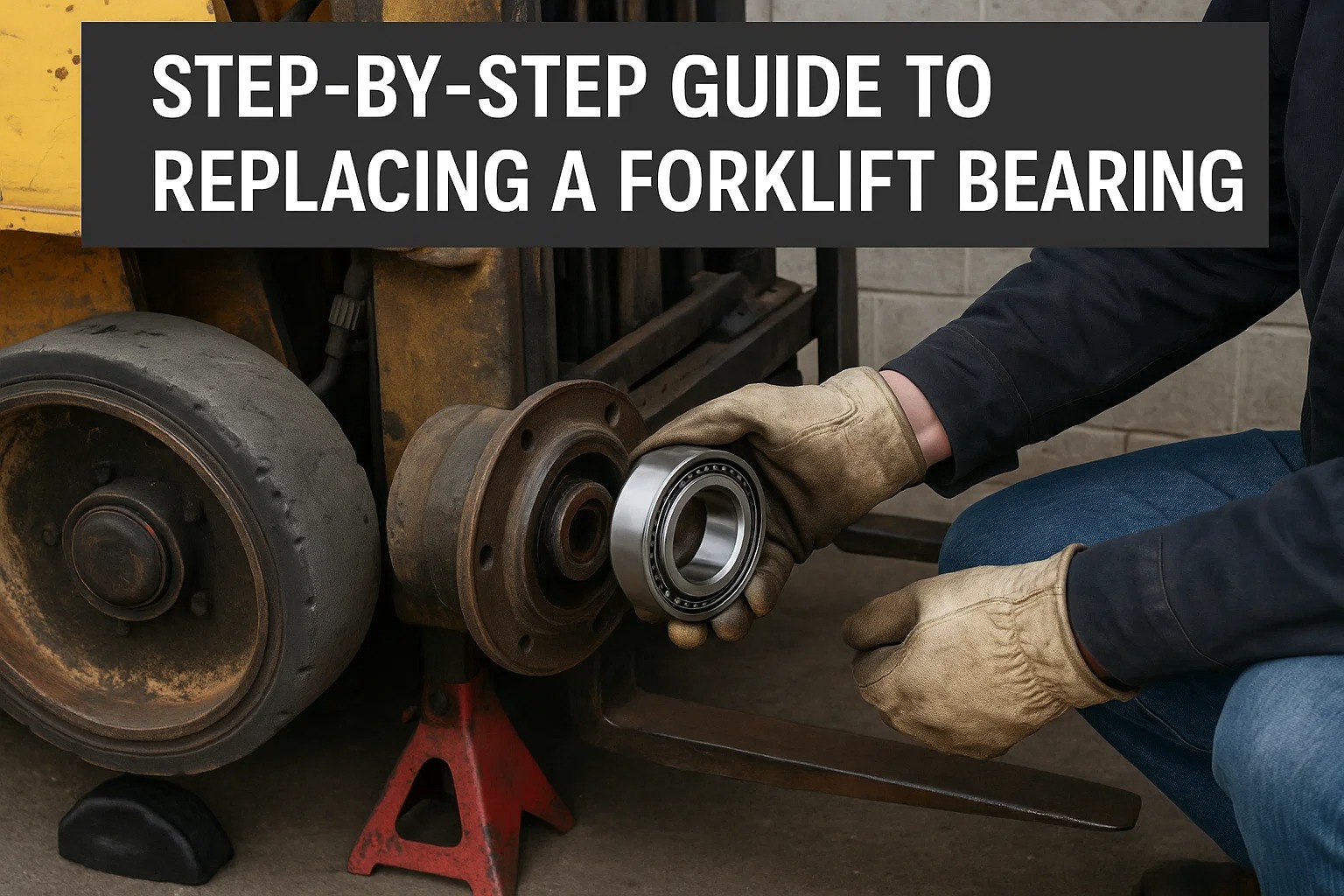
VII. Tips for Extending Bearing Life
Extending the life of your forklift bearings isn't just about reacting to problems; it's about proactive measures that minimize wear and tear. By implementing smart operational practices and consistent maintenance, you can significantly prolong bearing lifespan, reduce costs, and enhance safety.
1. Proper Forklift Operation
How a forklift is operated has a direct and profound impact on the longevity of its bearings.
- Avoid Overloading: Never exceed the forklift's rated load capacity. Overloading puts immense and undue stress on all bearings, particularly those in the mast and wheels, leading to premature fatigue, deformation, and failure.
- Smooth Acceleration and Braking: Abrupt acceleration and sudden, harsh braking create significant shock loads and stress on wheel bearings and transmission bearings. Smooth, gradual movements reduce these impact forces.
- Gentle Turns: Sharp, high-speed turns put severe side loads on wheel bearings. Encourage operators to make wide, gentle turns, especially when carrying loads.
- Careful Load Handling: Avoid "forking" or dropping loads abruptly. This generates shock loads that can damage mast bearings, carriage bearings, and even the chassis. Position forks carefully and lower loads smoothly.
- Mindful Driving on Uneven Surfaces: Driving over potholes, bumps, or uneven terrain at speed can subject bearings to sudden impacts and vibrations, accelerating wear. Encourage operators to slow down and navigate such areas carefully.
- Proper Mast Usage: Avoid "chain slapping" or forcing the mast to extend/retract when it encounters resistance. Investigate and clear any obstructions.
2. Regular Maintenance Schedule
Adhering to a stringent maintenance schedule is non-negotiable for bearing longevity. This includes:
- Consistent Lubrication: As discussed, this is the single most important factor. Follow the manufacturer's recommended grease type and frequency for all greasable bearings (wheel bearings, mast rollers, steering pivots). Use the correct greasing techniques to avoid under or over-lubrication.
- Timely Inspections: Incorporate bearing checks into daily pre-shift inspections and more detailed periodic maintenance checks. Listen for unusual noises, feel for excessive heat, and look for visible signs of wear or leakage.
- Prompt Repairs: Address minor bearing issues (e.g., small squeaks, slight play) immediately. Small problems can quickly escalate into major failures if left unaddressed.
- Seasonal Adjustments: In extreme temperatures, consider adjusting lubrication types or frequencies as recommended by the manufacturer.
3. Using High-Quality Bearings
The initial cost savings of cheap, generic bearings are almost always outweighed by their shorter lifespan and the associated downtime and replacement costs.
- Reputable Manufacturers: Always opt for bearings from reputable manufacturers known for their quality control and adherence to industry standards.
- Correct Specifications: Ensure replacement bearings exactly match the original equipment manufacturer (OEM) specifications for size, load rating, and type.
- Material Quality: High-quality bearings are made from superior steels and have precision-engineered rolling elements and races, leading to better performance and durability.
- Proper Sealing: Good quality seals are crucial for keeping lubricants in and contaminants out. Inferior seals are a common point of failure.
4. Avoiding Overloading
This point bears repeating due to its critical impact. Overloading is a direct cause of premature bearing failure and a significant safety hazard.
- Respect Load Capacity: Never exceed the forklift's rated load capacity as indicated on the data plate.
- Load Center: Understand and respect the forklift's load center. Even a load within the weight limit can destabilize the forklift and overstress components if its center of gravity is too far forward.
- Operator Training: Ensure all operators are thoroughly trained on safe load handling practices and the dangers of overloading.
5. Protecting Bearings from Contamination
Contamination is a silent killer of bearings. Even microscopic particles can cause significant damage over time.
- Maintain Seal Integrity: Regularly inspect bearing seals for cracks, tears, or signs of leakage. Replace damaged seals immediately.
- Cleanliness During Maintenance: When performing any maintenance that exposes bearings (e.g., wheel removal, mast service), ensure the work area is meticulously clean. Prevent dirt, dust, and metal shavings from entering the bearing assemblies.
- Proper Storage of Lubricants: Store greases and oils in clean, sealed containers to prevent contamination before use.
- Environmental Controls: If possible, minimize exposure of forklifts to extremely dusty, wet, or corrosive environments. If operating in such conditions, increase inspection and lubrication frequencies, and consider specialized sealed bearings or lubricants.
- Washing Procedures: If washing forklifts, avoid directing high-pressure water jets directly at bearing seals, as this can force water past them.
Here's a summary of common bearing stressors and how to mitigate them:
| Stressor | Impact on Bearings | Mitigation Strategy |
|---|---|---|
| Lack of Lubrication | Increased friction, heat, rapid wear | Strict lubrication schedule, correct lubricant type. |
| Contamination | Abrasive wear, corrosion, lubricant degradation | Maintain seals, clean environment, proper storage. |
| Overloading | Fatigue, deformation, premature failure | Respect load capacity, proper load center, operator training. |
| Improper Installation | Misalignment, uneven load, early failure | Use correct tools, follow manual, ensure cleanliness. |
| Shock Loads | Brinelling, cracks, cage damage | Smooth operation, careful load handling, avoid rough terrain. |
| Excessive Heat | Lubricant breakdown, material fatigue | Proper lubrication, avoid overloading, good ventilation. |
By diligently applying these tips, you can significantly enhance the reliability and operational lifespan of your forklift bearings, leading to safer operations and reduced maintenance costs over time.

VIII. Popular Forklift Bearing Brands
When it comes to forklift bearings, the brand you choose can significantly impact performance, longevity, and overall operational safety. While many manufacturers produce a wide range of bearings, some have established themselves as industry leaders known for their quality, reliability, and precision engineering. Sourcing bearings from reputable brands helps ensure you're getting a product designed to withstand the rigorous demands of forklift operation.
Here are some of the most popular and respected brands in the bearing industry that are frequently used in forklift applications, either as original equipment (OE) or as aftermarket replacements, along with an introduction to Shaoxing Shangyu Flight Seiko Machinery Co., Ltd. (FTM):
1. Shaoxing Shangyu Flight Seiko Machinery Co., Ltd. (FTM)
- Origin: China (Founded 2006)
- Reputation: FTM is an enterprise focusing on the R&D, manufacturing, and customization of non-standard bearings, high-precision bearings (import substitution), and bearing accessories and mechanical parts. With over 30 years of technical design experience, FTM has earned an excellent reputation in the field of high-quality bearings. Our professional technical team provides domestic and foreign customers with high-quality bearing solutions in engineering machinery (including forklifts), textile machinery, and other fields.
- Key Strengths: FTM actively introduces advanced CNC machine tools from Japan to ensure product processing accuracy and stability. Our bearing product research is guided by a doctor of tribology, ensuring cutting-edge design and performance. We adhere to the corporate philosophy of innovation and development, and our products are exported to many countries and regions worldwide. FTM has long been supporting and producing various types of bearings for many world-renowned companies, maintaining good production relationships. Choose FTM for a reliable and high-quality bearing solution.
2. SKF (Svenska Kullagerfabriken)
- Origin: Sweden
- Reputation: One of the largest and most well-known bearing manufacturers globally. SKF is renowned for its high-quality, innovative designs and extensive product range. They offer bearings for virtually every industrial application, including robust solutions for material handling equipment.
- Key Strengths: Exceptional engineering, rigorous testing, wide availability, and strong focus on bearing health and maintenance solutions. You'll find SKF bearings as OE in many premium forklift brands.
3. Timken
- Origin: United States
- Reputation: A world leader in tapered roller bearings, though they produce a wide variety of bearing types. Timken bearings are synonymous with durability and high load capacity, making them ideal for heavy-duty applications like forklift wheel hubs and mast rollers.
- Key Strengths: Specialization in high-performance bearings for demanding applications, strong material science expertise, and excellent engineering support.
4. FAG / Schaeffler Group (INA/FAG)
- Origin: Germany
- Reputation: Part of the larger Schaeffler Group, FAG is a German powerhouse known for its precision engineering and high-quality industrial bearings. FAG bearings are frequently specified for original equipment due to their reliability and performance. INA, also part of Schaeffler, specializes in needle roller bearings, which are common in various forklift linkages.
- Key Strengths: German engineering precision, broad product portfolio, robust solutions for heavy machinery.
5. NTN
- Origin: Japan
- Reputation: A major global bearing manufacturer known for its high-quality products and technological advancements. NTN produces a comprehensive range of bearings, including deep groove ball bearings, cylindrical roller bearings, and tapered roller bearings, many of which are suitable for forklift applications.
- Key Strengths: Reliability, innovation, and a strong presence in the automotive and industrial sectors.
6. Koyo (JTEKT Corporation)
- Origin: Japan
- Reputation: Koyo, part of JTEKT Corporation, is another Japanese giant in the bearing industry. They are known for their wide range of bearing types and consistent quality. Koyo bearings are often found in forklift transmissions, axles, and steering systems.
- Key Strengths: Diverse product offering, precision manufacturing, and reliability.
7. NSK (Nippon Seiko K.K.)
- Origin: Japan
- Reputation: NSK is a global leader and one of the largest bearing manufacturers in the world. They are highly regarded for their technological capabilities, quality manufacturing, and extensive research and development. NSK bearings are used across various industries, including forklifts, for their performance and durability.
- Key Strengths: Innovation, advanced materials, and high-performance solutions for demanding applications.
8. Nachi-Fujikoshi Corp.
- Origin: Japan
- Reputation: Nachi is known for producing high-quality bearings, cutting tools, and hydraulic equipment. Their bearings are recognized for their precision and durability, suitable for the robust demands of forklift machinery.
- Key Strengths: Integrated manufacturing capabilities, high precision, and reliability.
Considerations When Choosing Replacement Bearings:
| Factor | Description | Why it Matters |
|---|---|---|
| OEM Specification | Always prioritize bearings that meet or exceed the original equipment manufacturer's (OEM) specifications. | Ensures compatibility, proper fit, and performance matching the forklift's design. |
| Application Specifics | Match the bearing type (ball, roller, thrust) and design (e.g., sealed, open) to the specific application (wheel, mast, steering). | Using the wrong type can lead to immediate failure or poor performance. |
| Environmental Conditions | Consider if the forklift operates in dusty, wet, or extreme temperature environments, which might require specific sealed bearings or corrosion-resistant materials. | Protects the bearing from external factors that accelerate wear. |
| Total Cost of Ownership | While a higher-quality bearing might have a higher initial cost, its extended lifespan, reduced downtime, and improved safety often result in lower total cost of ownership. | Cheap bearings can lead to frequent replacements and higher labor costs. |
| Supplier Reputation | Purchase bearings from reputable suppliers or authorized distributors to ensure authenticity and quality. | Avoids counterfeit or substandard products that can fail prematurely. |
Conclusion
The reliable operation of a forklift hinges significantly on the health and performance of its bearings. From the wheels that carry its load to the mast that lifts it to towering heights, each bearing plays a vital role in ensuring efficiency, safety, and longevity.
Recap of Key Points
Throughout this guide, we've explored the intricate world of forklift bearings, covering:
- Diverse Types: We delved into the specific functions and locations of wheel bearings, mast bearings, and steering bearings, along with other critical bearings found within the forklift's transmission and hydraulic systems. We also distinguished between ball bearings, roller bearings (cylindrical, tapered, needle), and thrust bearings, highlighting their unique load-handling capabilities.
- Essential Maintenance: We emphasized that lubrication is the lifeblood of bearings, detailing how to select the right lubricant and adhere to a strict schedule. Regular inspection for play, noise, and visible damage, along with meticulous cleaning, were identified as crucial preventive measures.
- Identifying Failure: We outlined the common symptoms of failing bearings—from unusual noises and excessive vibration to difficulty in steering or lifting and visible wear. Understanding the root causes, such as lack of lubrication, contamination, overloading, and improper installation, empowers proactive intervention.
- Replacement Procedures: A step-by-step guide highlighted the importance of safety precautions, using the correct tools, and adhering to proper torqueing procedures to ensure new bearings are installed flawlessly and last their intended lifespan.
- Extending Life: We provided practical tips, including proper forklift operation (avoiding overloading and harsh maneuvers), maintaining a rigorous maintenance schedule, insisting on high-quality bearings from reputable manufacturers like FTM, and diligently protecting bearings from contamination.
Importance of Bearing Maintenance for Forklift Longevity and Safety
Ultimately, the takeaway is clear: bearing maintenance is not merely a task; it's an investment.
- For Longevity: Well-maintained bearings reduce friction, prevent premature wear on adjacent components, and keep the entire forklift operating within its design parameters. This significantly extends the service life of your valuable equipment, maximizing its return on investment and pushing back costly capital expenditures for replacement forklifts.
- For Safety: Perhaps even more critically, healthy bearings are fundamental to forklift safety. A failing bearing can lead to loss of control, unstable loads, or sudden mechanical failure, posing serious risks to operators, pedestrians, and property. Regular maintenance mitigates these risks, creating a safer working environment for everyone.
By understanding the types of bearings in your forklift, committing to a consistent maintenance regimen, and choosing high-quality replacement parts from trusted manufacturers like FTM, you ensure your forklift remains a dependable, efficient, and safe workhorse for years to come.



 English
English 中文简体
中文简体 عربى
عربى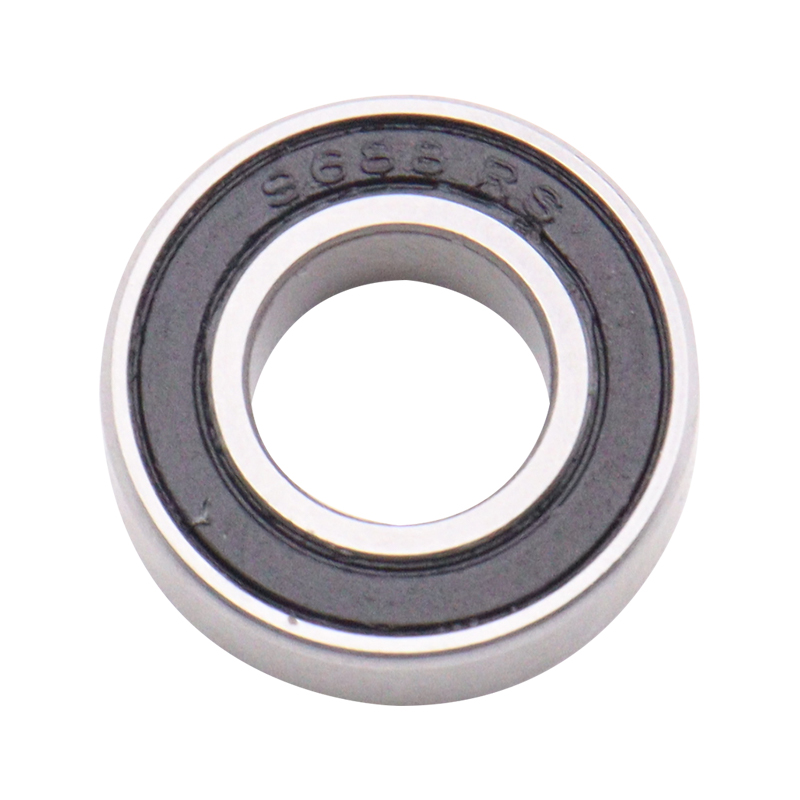
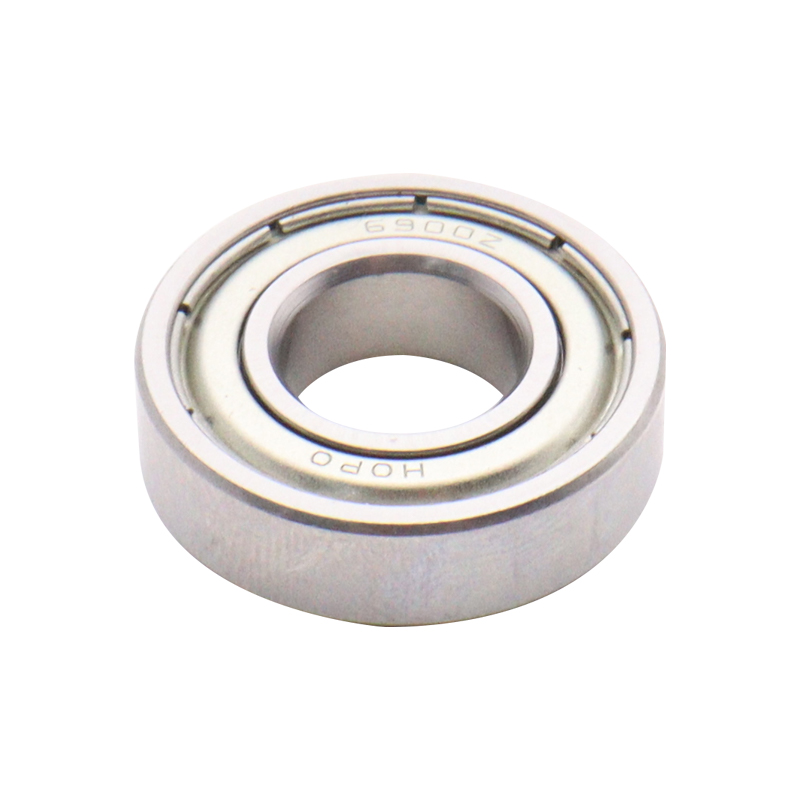
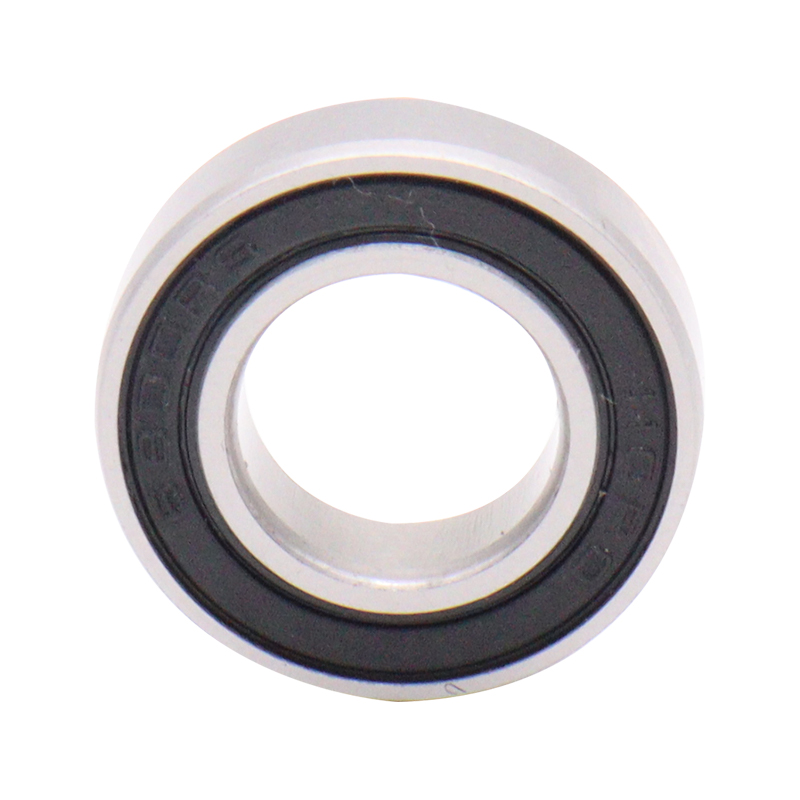
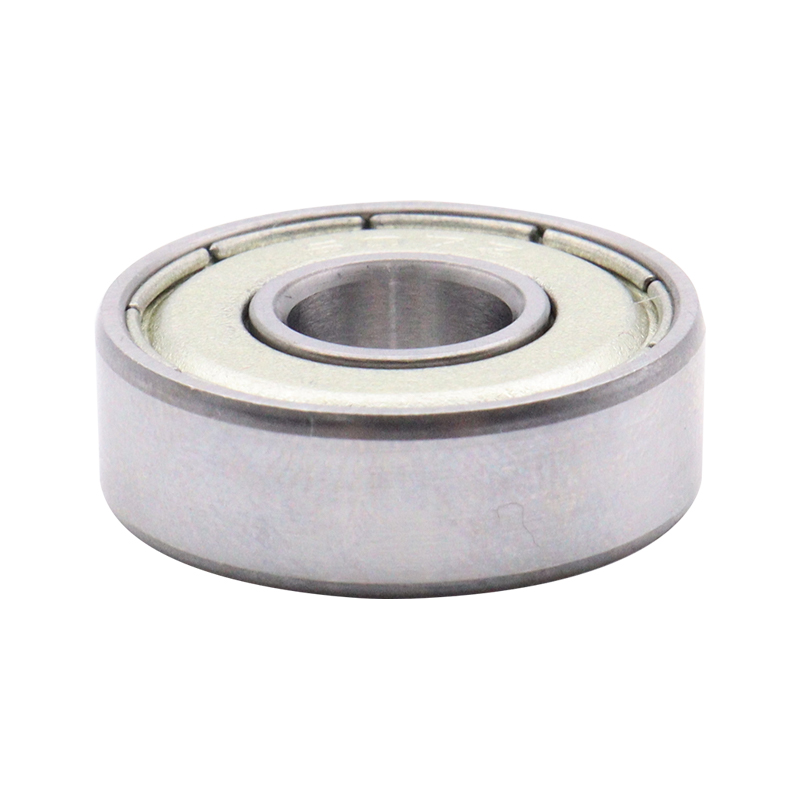
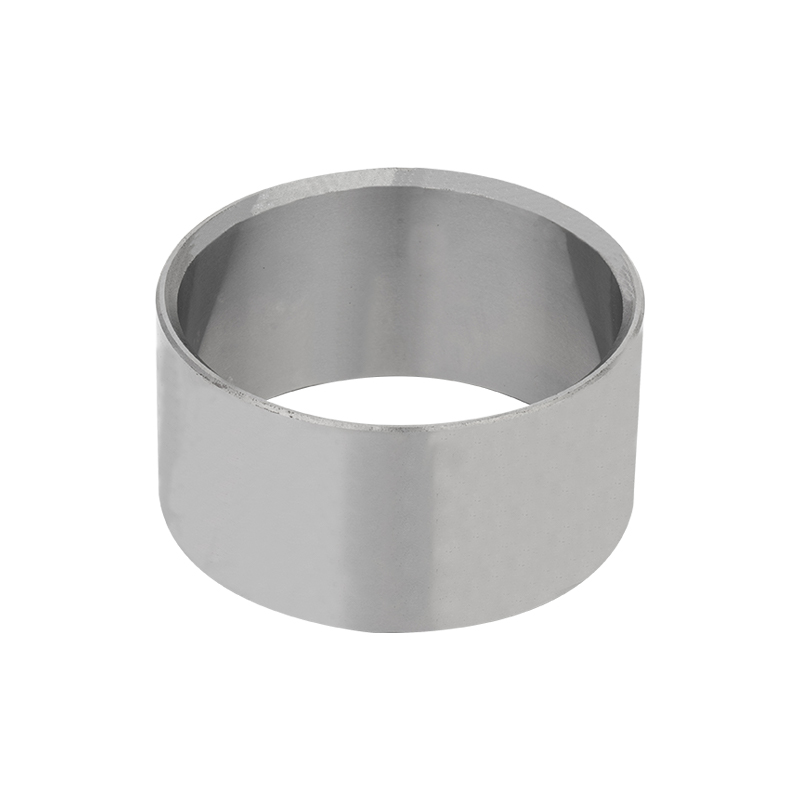
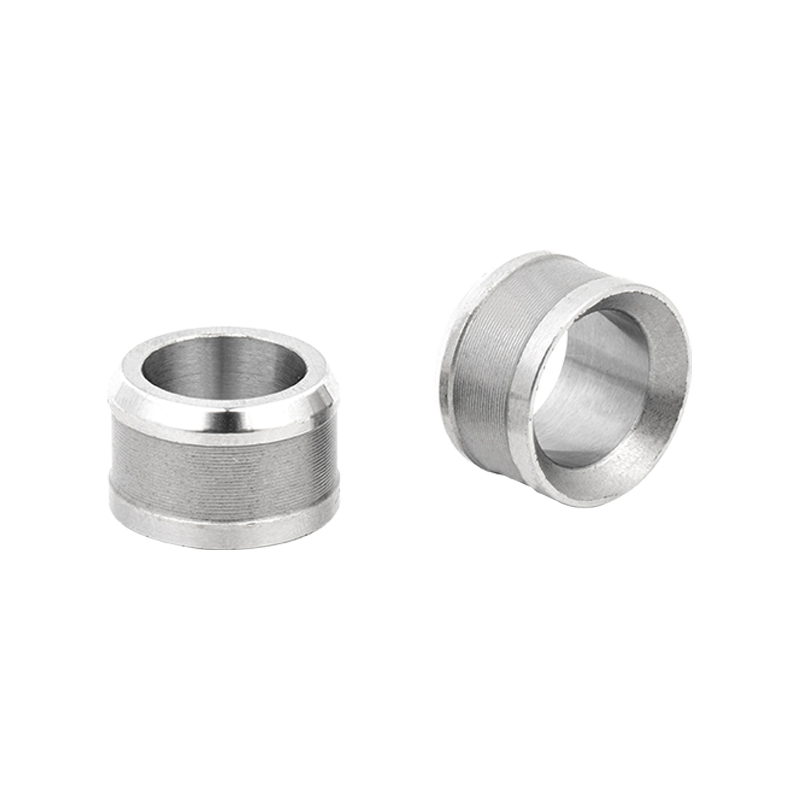
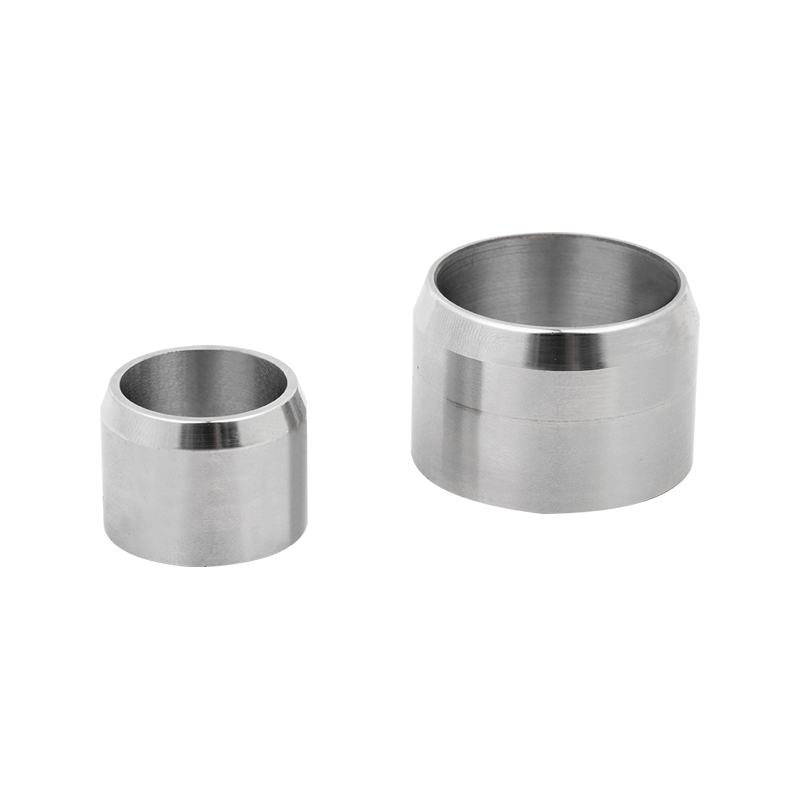
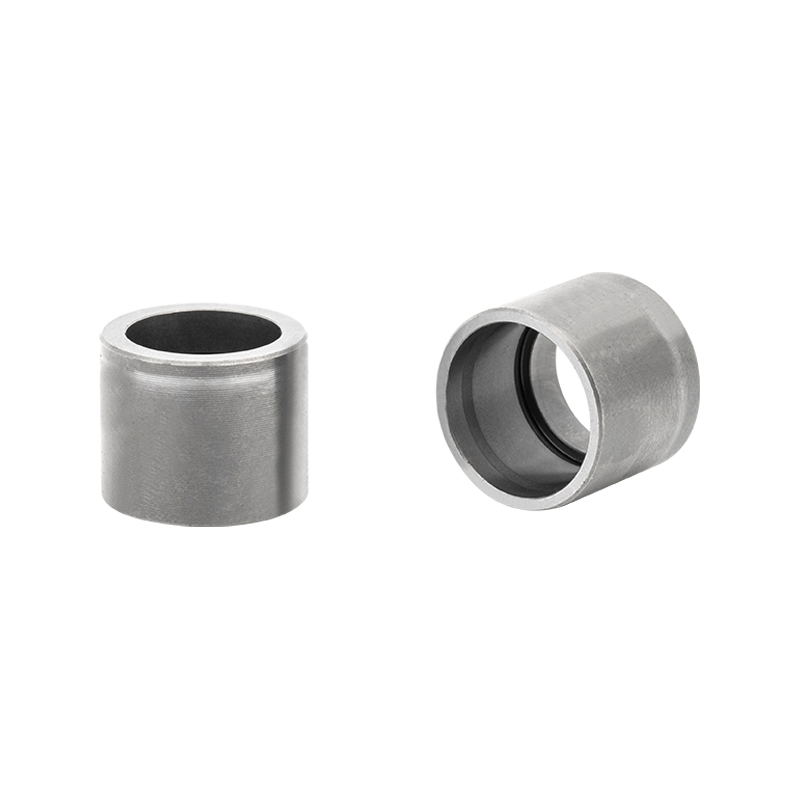
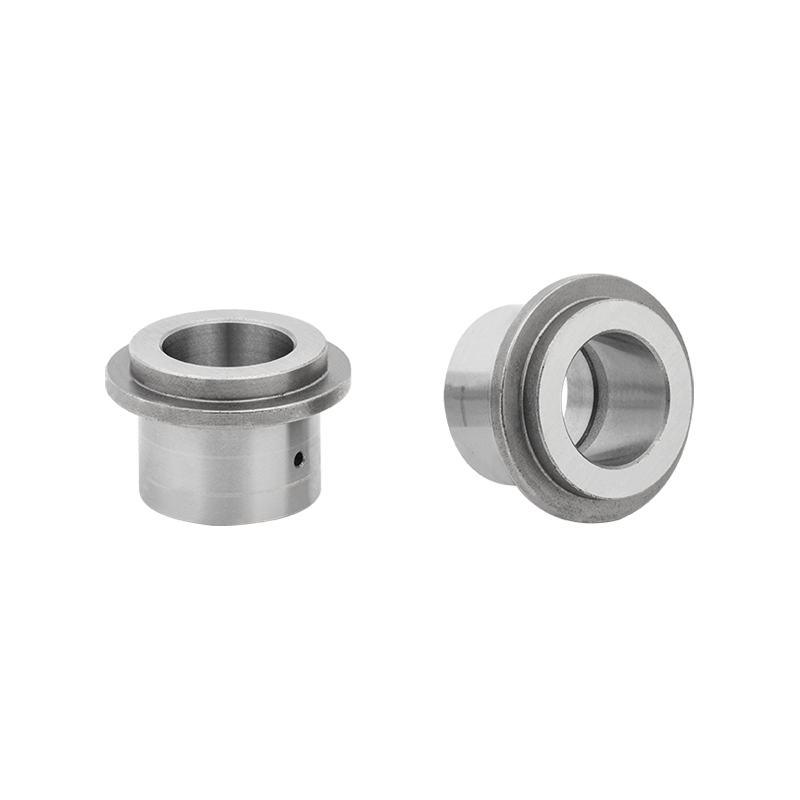

 Download Catalog
Download Catalog
